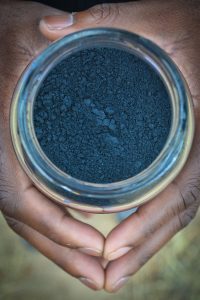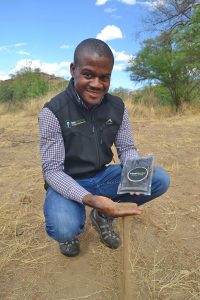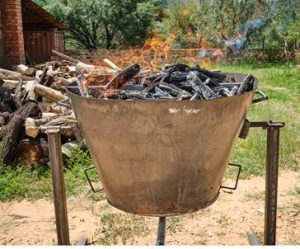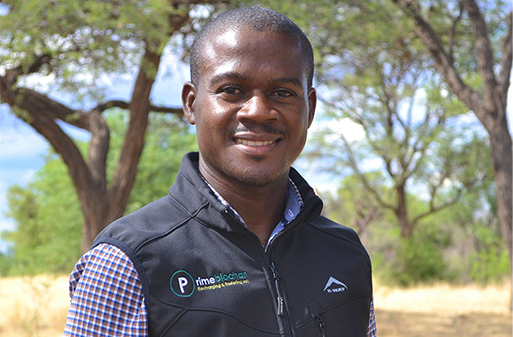People see yields going down or longer dry spells and they think it is just the norm, but this is where biochar comes into play.

Prime Biochar is made using encroacher species of bush biomass, but with parts too small to be used in charcoal production. Biochar is combined with microbial fungus and thus forms microbial biochar. The product, made by Sakeus and Joel Kafula, can improve the quality of soil for centuries to come.
Sakeus grew up watching common agricultural practices that result in the degradation of the land. This is what drove his passion for restoration solutions. “I saw from a young age how our practices were degrading the environment, and I knew this was what I needed to do, to be in a space that can help rectify some of these things.”
“People see yields going down or longer dry spells and they think it is just the norm, but this is where biochar comes into play. It can help your crop survive these dry spells,” notes Sakeus, who adds that the benefits of biochar are not only available to crop farmers. Biochar can also be safely added to livestock licks and feeds, and in doing this, animals are more easily able to utilise and digest poor quality feed. This addition of microbes to the diet of livestock reduced their methane production which is another benefit to the environment.



While Biochar is new in Namibia, it shows great potential for a myriad of applications. In addition, it shows great potential to contribute to climate change adaptation. The Namibia Charcoal Association (NCA), Namibia University of Science and Technology (NUST) and the University of Namibia (UNAM) are championing several.
[wpfilebase tag=file id=133 /]
[wpfilebase tag=file id=107 /]

